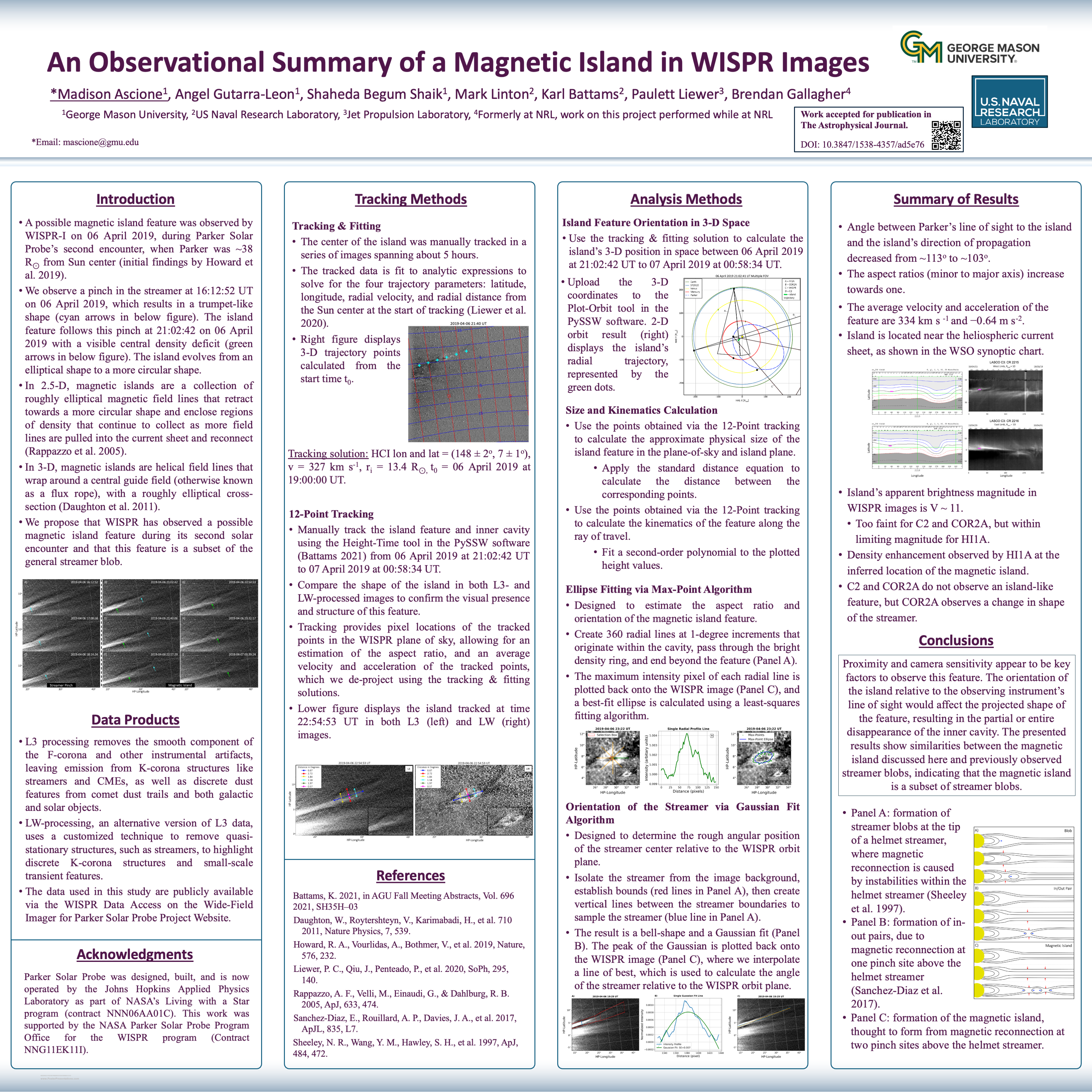Authors: Madison Ascione (George Mason University), Angel Gutarra-Leon (George Mason University), Shaheda Begum Shaik (George Mason University), Mark Linton (US Naval Research Laboratory), Karl Battams (US Naval Research Laboratory), Paulett Liewer (Jet Propulsion Laboratory), Brendan Gallagher (US Naval Research Laboratory)
We present the identification and physical analysis of a possible magnetic island feature in white-light images observed by the Wide-field Imager for Solar Probe (WISPR) on board the Parker Solar Probe. The island is imaged by WISPR-I during Parker’s second solar encounter on 06 April 2019, when Parker was ~38.5 Rsun from the Sun’s center. WISPR-I observed a bright streamer change shape just a few hours before observing the magnetic island, which visually appears to travel along the streamer. The island appears elliptical in shape as a bright density ring enclosing a dark center, suggesting the presence of a magnetic guide field. We report that the average velocity and acceleration of the feature are approximately 334 km/s and -0.64 m/s2. The kinematics of the island feature, coupled with its direction of propagation being similar to that of the streamer, indicate that the island is likely entrained in the slow solar wind. We argue that these features are consistent with the formation of this island via reconnection in the current sheet of the streamer. The feature’s aspect ratio (calculated as the ratio of its minor to major axis) increases toward 1, indicating that it evolves from an elliptical to a more circular shape. The island is not visible in other white-light observations from the Solar and Heliospheric Observatory and the Solar Terrestrial Relations Observatory coronagraphs, suggesting that this is a comparatively faint heliospheric feature and that viewing perspective and WISPR’s enhanced sensitivity are key to observing the magnetic island feature.


